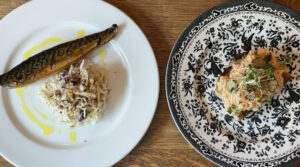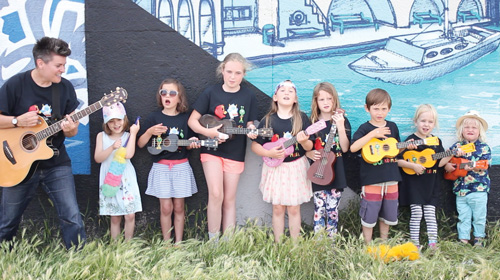
by Sasha Priest
Co-Director of Big Lion Events
You no doubt want to plan the perfect children’s party that will create a lifetime of happy memories and be talked about fondly for years. Arranging this spectacular event will take diligent organisation – we hope these handy tips and convenient checklist will help guide you through.
Tip 1 – Make a budget early and maybe split the costs
The average cost of a children’s party in 2023 was £298, according to Go.Compare*. Financially plan out everything you need in advance; invitations, party favours, entertainment, hall hire, food and decorations. We have recently found that some parents are choosing to combine their children’s parties to split the costs, which offers a fun way to reduce the costs.
Tip 2 – Choose a date, but be flexible
Selecting a date which the venue, the entertainer and your guests can all make can be tricky, so try not to pin yourself down to just one day. You will want all your loved ones and your little one’s friends to be able to come and celebrate with you, so making sure key people can make the choosen date is important.
Tip 3 – Things to consider when booking a venue
Save yourself the panic of trying to find a last-minute venue and make sure it is the first thing you check off your list. You need to consider things like:
• Can the venue cater for the number of people you want to invite?
• Is there parking either on site or nearby?
• Do they allow a bouncy castle?
• What time do they allow before and after the party for set-up and pack-down?
• Does it have a kitchen if you want to self-cater?
• What are the venues sound level limits and clean-up requirements.
We have found on average in Sussex venues to be £15-£25 an hour – maybe consider a community space or hall, that can be more reasonably priced and still provide the facilities you need.
Tip 4 – Theming and entertainment
Your little one probably has a current obsession with the most popular cartoon or game of the moment, so deciding the theme and matching decorations and entertainment is important. Picking a theme early on and making sure you secure the matching entertainment, is a must.
You can never go wrong with the ever-popular soft play and bouncy castle. Themes like princesses and Roblox get booked up quickly, so book early. Consider when you are booking your soft play or bouncy castle, if the company has the correct Public Liability Insurance, meets legal British Standards and also if they are a reputable company with great reviews.
Tip 5 – Bespoke cakes
If you are looking to get that personalised themed cake, you will need to book at least three months in advance as the coveted cake-makers book up quickly. If you want to economise on the cake many of the supermarkets, with a little notice, can often create a bespoke cake for you or some have great and affordable cake options on the shelves.
Tip 6 – The invitations
OK, so you have a venue, a theme with matching cake and entertainment and now you need to get your guests excited about the party! You can find some great personalised invitations on Etsy, or have you considered creating a special event Facebook page for the party as a free way of inviting guests? Don’t forget the important information: date and time, venue address, theme for dressing up and RSVP information.
Tip 7 – The decorations and party favours
Balloons are a must for tying in a theme and adding that wow factor! If you are looking to book a balloon artist who will take away the hassle of fighting with balloons, securing a professional who can provide that perfect balloon garland or themed balloon bouquets is essential! There are also DIY options available online but they can be low quality and time consuming.
Once the balloons have been sorted, you have to think party hats, table cloths, cups, plates, napkins, cutlery and banners. There are some suppliers out there if you can splurge a bit, who provide this all in a one handy box, alternatively online can be a great place to look for those themed decorations but again be wary of the quality.
Tip 8 – Your catering options
If you have the funds and want to splash out, there are some lovely grazing table companies who can cater for your every desire, but you need to be very organised and book at least six months ahead. Supermarkets often have brilliant frozen food choices, which can be cooked on the day, and this is a great cost-saving solution. If you want a totally stress-free affordable option, try party platters which offer good value for money, and are both child-friendly and timesaving, with large savoury grazing boxes costing around £16 and 20 piece sandwich platters around £12.
Party planning can be stressful and there are companies out there who can do all the legwork for you, so all you need to do is turn up and have a great time, knowing it is all in-hand! But, whatever your vision for the dream party and however big or small the budget is, with this checklist and tips, you can make your vision into a reality whilst making a lifetime of heart-warming and fun memories!
Sasha Priest, B.A (Hons) Business and Management, is a Co-Director of Big Lion Events and a qualified balloon artist. Sasha’s passion has been to help families across Sussex create special memories, by being an all-encompassing soft play hire and party supplier for children’s parties, weddings, baby showers and large-scale events. More information can be found at www.biglionevents.com
* Go.Compare – (https://press.gocompare.com/news/dont-forget-the-card-a-quarter-of-parents-are-paying-for-kids-birthday-parties-using-a-credit-card)
Party planning checklist
3 – 4 months before
o Make a budget
o Pick a date and time
o Choose a theme
o Book a venue
o Book the entertainment
o Book the cake maker
o Book a sound system supplier (if the venue does not have one)
6 – 8 weeks before
o Order personalised invitations
o Book balloon artist
o Order party favours and personalised party boxes
o Order food from caterer (if choosing this option)
o Send out invitations
o Set up a social media event page/send virtual invitations
o Order themed decorations
4 -5 weeks before
o Chase the RSVPs
o Plan a party playlist
o Sort the the favours and party boxes
o If self-catering, write a list of food and drink items needed
o Order supermarket cake and platters (if choosing this route)
o Confirm venue
o Confirm entertainment
o Confirm catering
o Confirm cake
1 – 2 weeks before
o Purchase food and drink if self-catering
o Collect cake
Day of Party
o Cook the food if self-catering
o Decorate the venue
o Inflate balloons, if DIY balloons
o Set up the table decorations
o Lay out the food and cake display (don’t forget the matches!)
o Set up a gift table
o Set up the sound and playlist






 amp
amp










